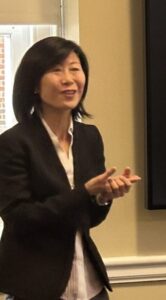
In a first-of-its-kind statewide program, the 4-VA partnership of ten higher education institutions in Virginia has awarded George Mason University Professor Younsung Kim a grant to conduct collaborative multidisciplinary research with colleagues at partner 4-VA schools. The results will then be implemented as learning modules into undergraduate courses.
Although 4-VA has awarded Collaborative Research Grants for more than ten years, the grants have been funded separately by each institution. This new 4-VA effort is the first to be supported collectively by the statewide partnership and has added a course redesign and experiential learning element. The project will include faculty members from George Mason, Virginia Tech, and the University of Virginia with a focus to grow 4-VA’s collaborative research success.
Specifically, Kim’s proposal, “Designing Experiential Learning Modules for Stormwater Management and Climate Adaptation via Spatial Analysis Tools,” plans to use spatial mapping tools to incorporate appropriate green infrastructure to best reduce the effects of stormwater runoff. From there, the team will migrate the information into environmental policy coursework at their respective institutions, and plans to ultimately make the content available statewide.
Kim, a member of George Mason’s Department of Environmental Science and Policy for 15 years, will collaborate with UVA’s B. Brian Park, professor in Civil & Environmental Engineering and Systems & Information Engineering, and Mintai Kim in VT’s College of Architecture, Arts, and Design. Also joining the team is George Mason PhD student Colin Chadduck.

In reviewing the proposal, 4-VA evaluators noted Kim’s proposition as a standout, citing a number of key factors, including ‘addresses an important topic affecting the state and beyond,’ ‘inherent interdisciplinary approach incorporating science policy, data science techniques, and architecture,’ and ‘lends itself to creative cross-school collaborations — and the experiential module will be incredibly useful.’
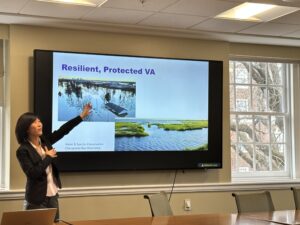
“I am delighted and honored to accept this award as we work together across the commonwealth to raise the bar for our faculty and students studying this important work,” says Kim. “As climate change is increasing faster than climate prediction models have suggested, it is critical that we place more emphasis on integrating green infrastructure in climate vulnerable regions. Together, we can tackle this critical challenge.”
In addition to George Mason, other schools in the 4-VA collective include Christopher Newport University, James Madison University, Old Dominion University, Radford University, the University of Virginia, Virginia Commonwealth University, Virginia Military Institute, Virginia Tech, and the College of William and Mary. 4-VA was established in 2010 upon the recommendation of the Governor’s Higher Education Commission and the Governor’s Commission on Economic Development and Job Creation to encourage collaboration in both education and research, leverage the strengths of each institution, and reduce working in silos.
State Working Group Chair Matt Banfield of UVA explains, “4-VA has a long track record of success with the Collaborative Research Grants program and we are excited to expand this model to support course redesign initiatives. 4-VA collaborative projects have built bridges between our institutions, nurtured hundreds of faculty and student relationships, provided valuable opportunities for experiential learning and hands-on research, and jumpstarted novel research projects that have gone on to receive national and international attention. We are looking forward to supporting this project proposed by Professor Kim and her team.”




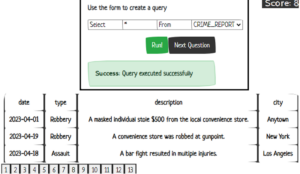
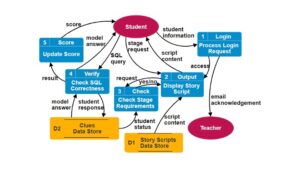

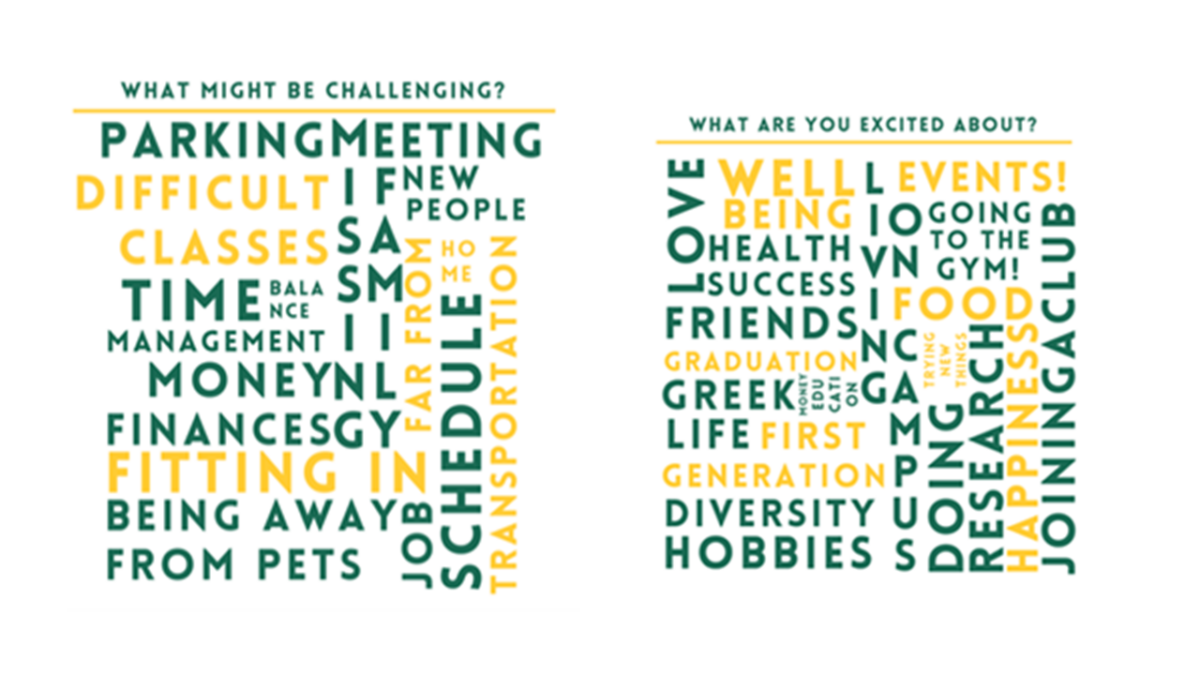
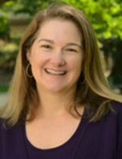 The concept is being led by Kelly Schrum, a professor in Mason’s Higher Education Program in the College of Humanities and Social Sciences. Schrum has brought together a group of faculty members, undergraduate, and graduate students to put the plan into action. In addition, representatives from ADVANCE, the Office of Undergraduate Admissions, and the First-Gen+ Center will also play a role in the project.
The concept is being led by Kelly Schrum, a professor in Mason’s Higher Education Program in the College of Humanities and Social Sciences. Schrum has brought together a group of faculty members, undergraduate, and graduate students to put the plan into action. In addition, representatives from ADVANCE, the Office of Undergraduate Admissions, and the First-Gen+ Center will also play a role in the project.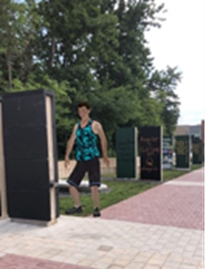 welcomes them to Mason. Students will see a virtual panel where they will find questions and answers from current students and be invited to add their voice to the conversation. Encouraging words from the First Gen+ Center will appear on the screen, such as “You are the first, but you won’t be the last.”
welcomes them to Mason. Students will see a virtual panel where they will find questions and answers from current students and be invited to add their voice to the conversation. Encouraging words from the First Gen+ Center will appear on the screen, such as “You are the first, but you won’t be the last.”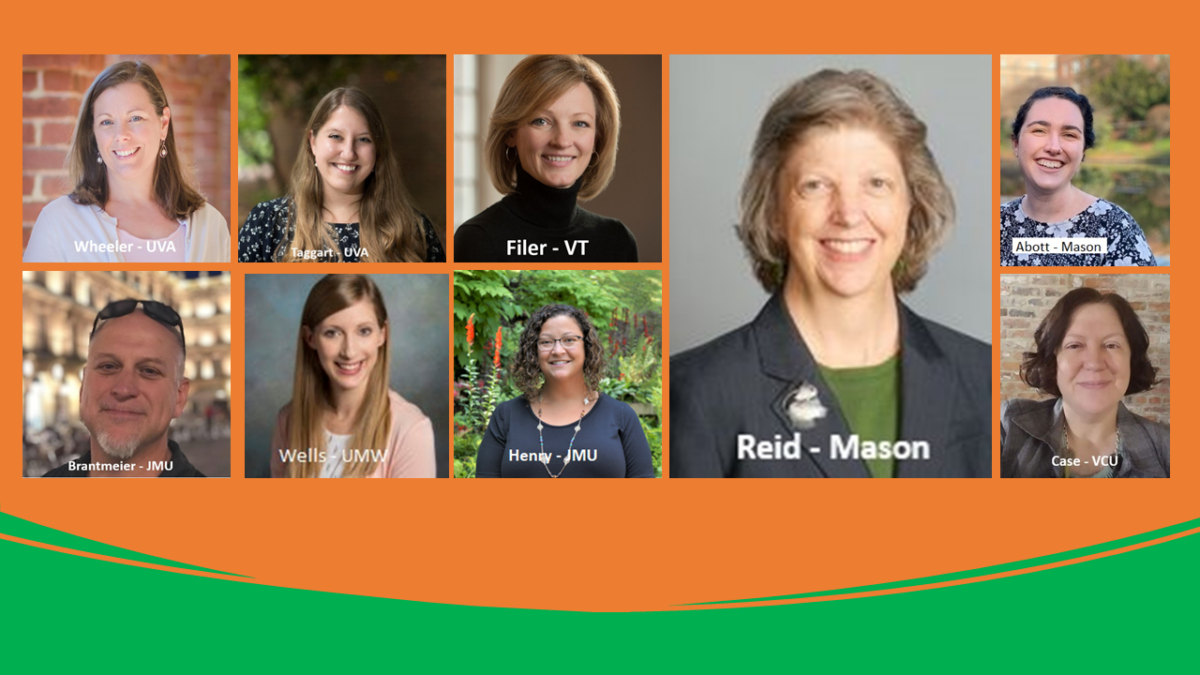
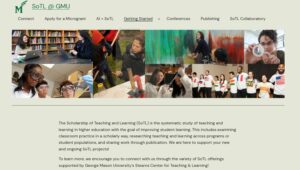 Next, the team created
Next, the team created 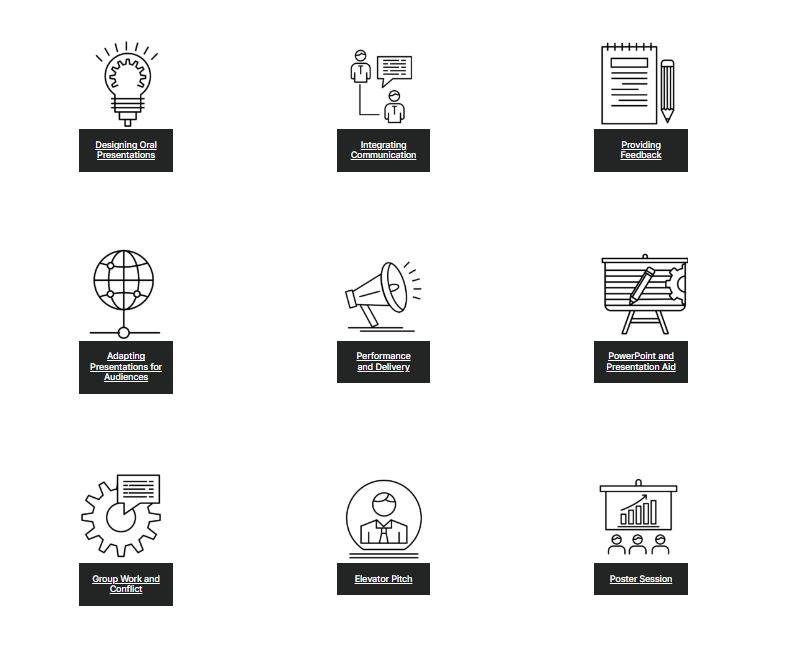
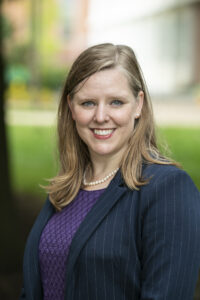
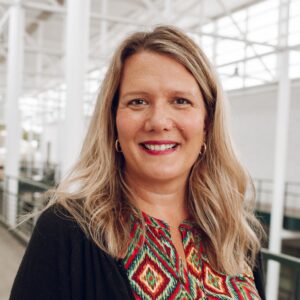
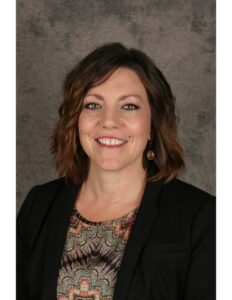
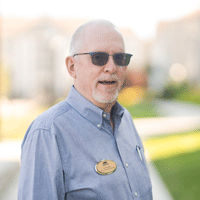
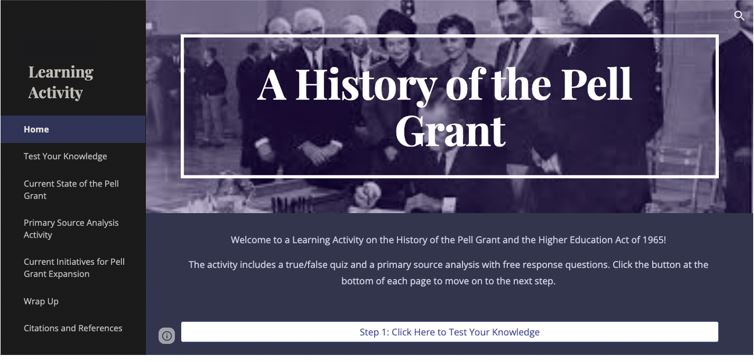
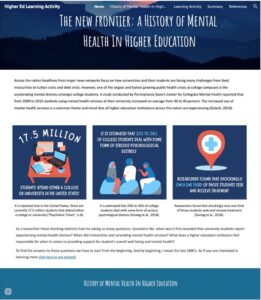 project on teaching and learning the history of higher education. Thirty-five students agreed to share their work for analysis and 24 were interviewed after completing the course. The survey and interview data made clear that students appreciated the value and relevance of studying the history of higher education for both their curricular and professional goals. One student explained, “We were able to take what we learned in the course and apply it to the project in a way that was very effortless, and that really helped me think about history in a different way.”
project on teaching and learning the history of higher education. Thirty-five students agreed to share their work for analysis and 24 were interviewed after completing the course. The survey and interview data made clear that students appreciated the value and relevance of studying the history of higher education for both their curricular and professional goals. One student explained, “We were able to take what we learned in the course and apply it to the project in a way that was very effortless, and that really helped me think about history in a different way.”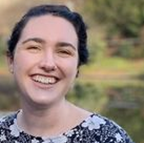
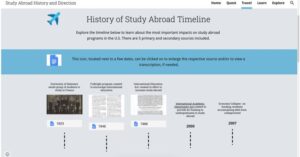 Each school contributed OER materials for the website. In addition to primary and secondary sources, the website now contains a database of institutional archives with digitized content, including yearbooks. Thanks to the two undergraduate research assistants, Azamy and Tcheo, over 700 institutional archives were cataloged on the site, including 48 Hispanic-serving institutions (HSIs), 24 historically black colleges and universities (HBCUs), and 15 women’s colleges. Additionally, the list includes 63 community colleges which is especially important given the lack of attention to these institutions historically.
Each school contributed OER materials for the website. In addition to primary and secondary sources, the website now contains a database of institutional archives with digitized content, including yearbooks. Thanks to the two undergraduate research assistants, Azamy and Tcheo, over 700 institutional archives were cataloged on the site, including 48 Hispanic-serving institutions (HSIs), 24 historically black colleges and universities (HBCUs), and 15 women’s colleges. Additionally, the list includes 63 community colleges which is especially important given the lack of attention to these institutions historically.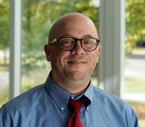 “I sincerely appreciated having an opportunity to collaborate with colleagues across the state for this 4-VA project. Through our conversations and research, I developed new pedagogical approaches that benefited students and deepened my thinking about the history of higher education.”
“I sincerely appreciated having an opportunity to collaborate with colleagues across the state for this 4-VA project. Through our conversations and research, I developed new pedagogical approaches that benefited students and deepened my thinking about the history of higher education.”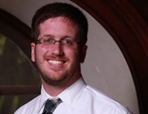 “We really enjoyed being part of this effort to expand student research on the history of higher education. Everyone came away from this project with a deeper understanding of how important it is to develop critical thinking skills and to look beyond our own institutions.”
“We really enjoyed being part of this effort to expand student research on the history of higher education. Everyone came away from this project with a deeper understanding of how important it is to develop critical thinking skills and to look beyond our own institutions.”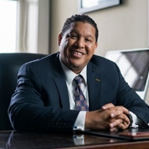 “The website, which holds a treasure trove of student research and engagement from a wide range of institutions, will be invaluable as we move ahead in studying the complex and influential histories of American higher education.”
“The website, which holds a treasure trove of student research and engagement from a wide range of institutions, will be invaluable as we move ahead in studying the complex and influential histories of American higher education.”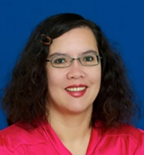 “When this asynchronous learning project was first introduced to the students, they were thrilled at the thought of not having to write a 20-page paper, however in the end, they did more work doing research on their chosen subject. They enjoyed this project because it allowed them a space for research and reflection, and it taught them how to create an interactive learning environment in an asynchronous environment. Being able to evaluate and participate in the projects created by other students in other universities across Virginia also taught them about their peers’ projects, too.”
“When this asynchronous learning project was first introduced to the students, they were thrilled at the thought of not having to write a 20-page paper, however in the end, they did more work doing research on their chosen subject. They enjoyed this project because it allowed them a space for research and reflection, and it taught them how to create an interactive learning environment in an asynchronous environment. Being able to evaluate and participate in the projects created by other students in other universities across Virginia also taught them about their peers’ projects, too.”